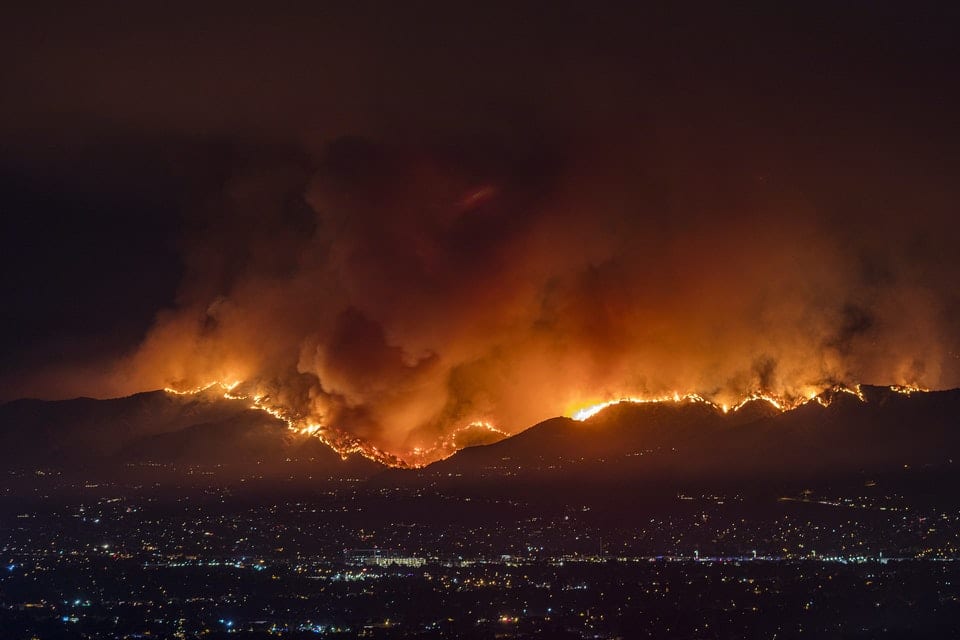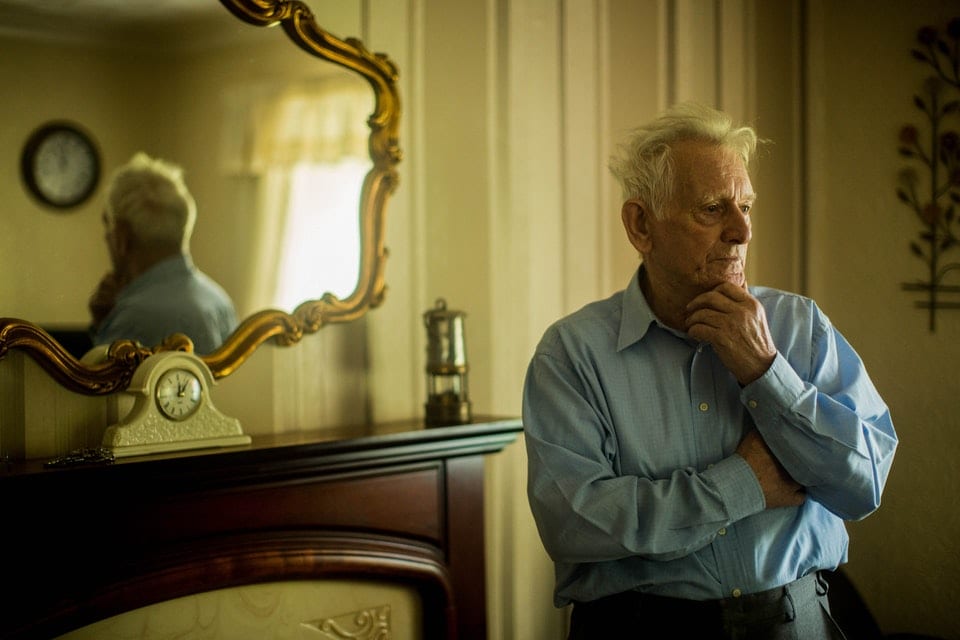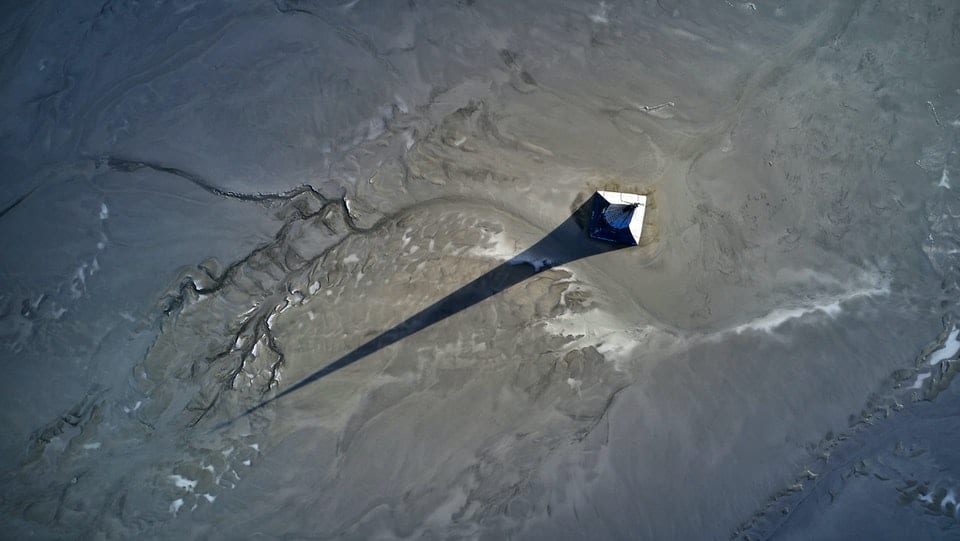ART3’s latest drop features award-winning artists turning their lens on the climate crisis, with at least 200 trees being planted for every NFT sold
Last week ART3.io dropped the Decade of Change collection, comprising 23 award-winning artworks that capture the defining issue of our time: the climate crisis.
Originally part of a major international photography exhibition – curated by leaders in art, activism and science; touring from Hong Kong to New York Climate Week – the works offer a timely snapshot of a pivotal moment in our planet’s history, as seen through the lenses of distinguished photographers including Ruairidh McGlynn, Yuyang Liu and Lena C Emery.
Spanning humankind to wildlife, and cityscapes to ecosystems, the collection shines a light on the strength and fragility of the natural world. It examines global warming’s indirect impacts on communities and everyday people, and humanity’s efforts to turn things around.
Minted on Polygon – reducing the process’ carbon emissions by up to 99 per cent – the works are on sale as unique NFT editions of ten, with exclusive unlockable content for collectors. Ten per cent of all primary sales will be donated to the Eden Reforestation Project, equating to at least 200 trees planted for every NFT sold.
Here, we chat to six artists from the collection about the artwork they’re selling.
Eric J Smith

LA-based environmental photographer Eric J. Smith is concerned with shining a light on “the most pressing issues of our time”.
A passionate oceans and wildlife advocate, Smith’s mission is to share the diversity and beauty of our planet by evoking a sense of wonder, awe and most importantly, empathy. His work has been exhibited by National Geographic; at the Conference of the Parties (COP22), and the UN Climate Change Conference in Marrakech, Morocco. He minted his first NFT in the summer of 2021, drawn to the crypto space for its ability to “ensure authenticity in a world where digital images often multiply uncontrolled, with no tangible benefit to the creator”.
Smith’s Decade of Change image captures the La Tuna wildfire, which erupted in the Verdugo Mountains above Burbank, California, in September 2017, and was the largest wildfire in Los Angeles County in half a century. “The mountains were ablaze for over a week and I took this photo on the first night of the fire from Mulholland Drive,” Smith reflects. “The increasingly drier, hotter weather is exacerbating wildfire season in the American West and around the world.”
Eric J Smith’s work is available to buy here.
Michael Snyder

Michael Snyder is a Virginia-based climate photojournalist and filmmaker. He has directed films in the Arctic, the Amazon, the Himalayas, and East Africa, and his work has been featured by National Geographic, the Guardian, the Washington Post, BBC, NPR and many more. “I studied to be an environmental scientist,” says Snyder, “but today I work as a visual storyteller because I believe in the power of narratives to shift what it means to live well on this planet without destroying it”.
Snyder’s projects are often built through collaborations with nonprofit organizations and harness the power of media ecosystems and positive storytelling. At its core, his work is an exploration of the dynamic, two-way relationship between environmental change and cultural change.
Snyder’s Decade of Change image captures a team of researchers piloting the marginal ice zone near the Norwegian island of Svalbard during the depths of winter. “Here, the ice cover has thinned dramatically due to climate change, opening up waterways that were once frozen. The loss of sea ice means that waters that were once shrouded for four to six months of the year are now exposed to light sources for the first time in human history,” Snyder explains. “The team is on an expedition to understand how these trace amounts of light may be radically altering the arctic marine ecosystem.”
Michael Snyder’s work is available to buy here.
Sally Low

Growing up during the latter years of apartheid South Africa, and its subsequent transition to democracy, Sally Low was witness to extreme levels of inequality and injustice from a young age. Now UK-based, her photography projects centre largely around communities affected by industry or development: marginalised people living in “forgotten” areas, where high levels of poverty, health and social issues make them an easy target for exploitation.
Low’s Decade of Change image pictures John, a former deep pit miner from Wales. The country’s role in the UK’s coal production history was pivotal, at one point employing some quarter of a million men; these men extracted the coal that kept not only the UK economy afloat, but provided critical support for Welsh mining towns and villages.
“The UK government’s decision to close deep pit mines in the 80s and 90s decimated villages and communities who relied on coal for their livelihoods,” explains Low. “Open Cast mining was introduced decades later, bringing with it noise and air pollution, alongside an increase in respiratory health problems in the surrounding villages.”
Sally Low’s work is available to buy here.
Raquel Rivas Navas

Raquel Rivas Navas is a photography student at the University of Brighton. Zero waste and veganism are central aspects of her life. Her Decade of Change NFT is rooted in a single question: “Would you stay if your home became a desert?”
The photograph is a satellite image of Sabha, an oasis city in Libya. Sabha is particularly vulnerable to the impacts of global warming, and as a result, is one of a growing number of world regions whose populations are threatened by displacement. “By the middle of this century, experts estimate that climate change is likely to displace between 150 and 300 million people,” says Rivas Navas. “If this group formed a country, it would be the fourth largest in the world. Yet neither individual countries nor the global community is completely prepared to support a whole new class of ‘climate migrants’.”
“The effects and the scale of our interactions with the environment are apparent on public satellites images,” Rivas Navas comments. “The project’s ambition is to share some understanding of the issues that are fuelling migration and the loss of fertile soil.”
Raquel Rivas Navas’ work is available to buy here.
Diana Buzoianu

Diana Buzoianu is a London-based photographer whose practice spans fine art, conceptual and landscape photography. For the Decade of Change drop, she has minted a bird’s eye shot of Geamăna, a Romanian village flooded by a toxic lake.
In 1977, local authorities in Geamăna decided to exploit a vast underground copper deposit in the Apuseni Mountains. But the mine also produced a large amount of toxic waste that needed to be stored, forcing around 400 families to evacuate their homes. “Since the mine opened for mineral extraction, the operating company has been dumping mining waste into surrounding valleys, expanding by one centimetre every year,” explains Buzoianu. “The acidic sewage contains metals such as copper, iron, zinc, lead and arsenic, which vastly pollute the area, slowly engulfing the now-abandoned village in a lake of vivid and unnatural colours.”
In the image, the tower of the village church can be seen peeking out amidst the water, “like an exclamation mark from a higher authority”.
Diana Buzoianu’s work is available to buy here.
Slater King

Slater King is an award-winning portrait photographer and photojournalist based in London.
In his image, King captures a woman working at a landfill in Kolkata, India, sorting through plastic bags and processing the city’s rubbish. “It was so hot inside the sheds and lean-tos,” King recalls, “which were strung out along the long, dry, dusty road, between the motorway and the landfill, like beads on a necklace.”
People produce 1.3 billion tons of rubbish each year, but only 9% of plastic rubbish is recycled. “The human cost of this, particularly in the developing world, is very high,” warns King. “People work very long hours in dangerous and often poisonous conditions. It is crucial that we remember these people’s humanity and dignity, and act accordingly.”
Slater King’s work is available to buy here.
